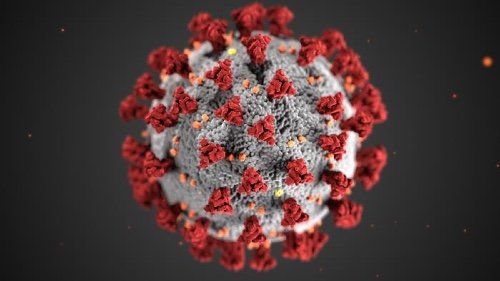Chest CT Scans Don’t Advance COVID-19 Detection in Areas with Low Infection
High false negative rates could expose patients to unnecessary radiation and deplete medical resources.

With calls for more testing amid the COVID-19 outbreak – and concerns about lack of viral testing kits in some locations – calls have emerged from some corners of healthcare for using CT scans as an alternative detection method despite warnings against doing so from industry leadership.
And, an article published on April 17 in Radiology, reveals new evidence that supports this radiological guidance. By evaluating the specificity and sensitivity of chest CT scans, the team, led by Soon Ho Yoon, M.D., Ph.D., from the Seoul National University College of Medicine radiology department, determined these images provide little value in areas with low COVID-19 prevalence (1 percent to 22.9 percent).
“Given the shortage of reverse transcriptase-polymerase chain reaction (RT-PCR) testing kits for … the pathogen causes COVID-19, recent studies have suggested that chest computed tomography scans could be used as a primary screening or diagnostic tools in epidemic areas,” the team wrote. “Our results imply that the usage of chest CT scans in low-prevalence regions could induce a large number of false-positive results.”
A false positive can unnecessarily expose patients who aren’t actually infected to more radiation exposure, additional testing, and greater medical costs, they explained. In addition, the erroneous results can add to the medical staff’s workload and deplete resources, such as personal protective equipment.
To determine whether a CT scan would be a viable testing option in low-prevalence areas, the team evaluated 63 studies that examined CT images and 19 that analyzed RT-PCR. Overall, the studies included 7,720 patients between the ages of 3 and 70 years.
Based on the team’s investigation, they determined the pooled sensitivity for CT was 94 percent and 89 percent for RT-PCR. The pooled CT specificity was 37 percent, however, indicating a significant gap in positive predictive value between the chest CT and RT-PCR tests in low-prevalence areas. In fact, in countries were prevalence was below 10 percent, they wrote, the positive predictive value of RT-PCR was more than 10 times higher than that of CT scans.
According to their literature analysis, support for using CT scans in low-prevalence areas was based on the performance of CT scans in geographic locations with a higher population of infected individuals. For example, many reports of the diagnostic performance of CT scans have come from China where COVID-19 prevalence stands at 39 percent.
“Suggestions from a high-prevalence region should be carefully adjudicated before clinical implementation in relatively low-prevalence regions,” they wrote. “Chest CT scans for the primary screening or diagnosis of coronavirus disease 2019 would not be beneficial in a low-prevalence region due to the substantial rate of false positives.”
GE HealthCare Debuts AI-Powered Cardiac CT Device at ACC Conference
April 1st 2025Featuring enhanced low-dose image quality with motion-free images, the Revolution Vibe CT system reportedly facilitates improved diagnostic clarity for patients with conditions ranging from in-stent restenosis to atrial fibrillation.
The Reading Room: Racial and Ethnic Minorities, Cancer Screenings, and COVID-19
November 3rd 2020In this podcast episode, Dr. Shalom Kalnicki, from Montefiore and Albert Einstein College of Medicine, discusses the disparities minority patients face with cancer screenings and what can be done to increase access during the pandemic.
Can Photon-Counting CT be an Alternative to MRI for Assessing Liver Fat Fraction?
March 21st 2025Photon-counting CT fat fraction evaluation offered a maximum sensitivity of 81 percent for detecting steatosis and had a 91 percent ICC agreement with MRI proton density fat fraction assessment, according to new prospective research.